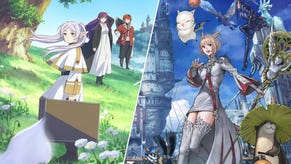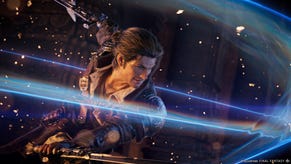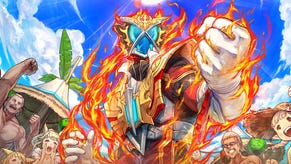Final Fantasy XIV's Ozma: The Anatomy of a Boss Fight
Battle content designer Masaki Nakagawa outlines what into creating the Ozma encounter.
This article first appeared on USgamer, a partner publication of VG247. Some content, such as this article, has been migrated to VG247 for posterity after USgamer's closure - but it has not been edited or further vetted by the VG247 team.
Today at Final Fantasy XIV Fan Festival 2016, FFXIV game director Naoki Yoshida and battle content designer Masaki Nakagawa talked about creating high-level content for the game. Before the presentation really kicked off, Nakagawa gave his background as an e-commerce system programmer and FFXIV fan, joining the team after reading a post on the official forums by Yoshida. In the post, Yoshida told forum members to send in their resumes, even if they didn't have much game development experience, because having passion and hard work ethic was more important.
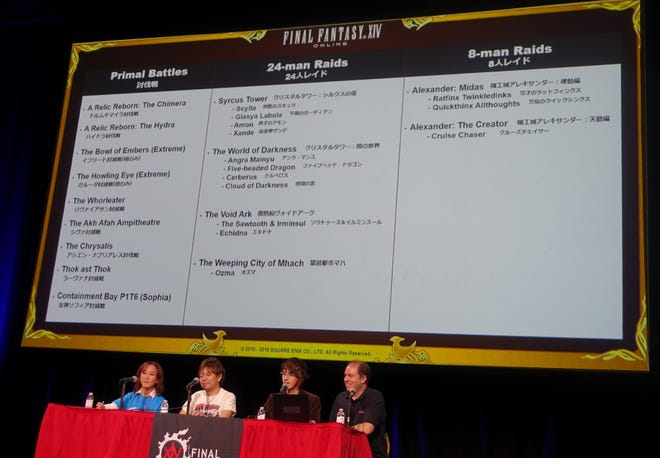
Nakagawa answered the call, eventually starting in the item team and working his way into the battle content team. Since then, Nakagawa has handled the design for a number of Primal and Raid battles, including Ozma in the Weeping City of Mhach, Echidna in the Void Ark, Sophia in Containment Bay P1T6, Garuda (Extreme), Shiva, and Ravana. The presentation focused on the design and implementation of the Ozma fight, which is a 24-man raid encounter.
Nakagawa laid out the process for creating a boss battle, starting with the initial plan, presentations to the internal battle team, further presentations to other teams, and resource creation, including models, animation, and sound.
"When I begin work on a new battle I start with what I feel are the most important things: the battle lore and battle concept," said Nakagawa.

The lore can come from two different paths: either the lore team brings a monster idea to the battle team, or the battle team has a great idea for a boss fight and brings that to the lore team. For the original lore concept of Ozma, Nakagawa imagined an insentient object that existed only to consume people and cities. This led to the battle concept, with players entering Ozma in order to triumph over specific encounters.
Nakagawa talked about his three personal guidelines for boss fight design, the first of which is the 60 second rule.
"If I can't explain the lore and battle concept in 60 seconds or less, then it's back to the drawing board," he said.
Nakagawa tries to make sure that each battle has a different new feature, which is his second personal rule. With the Ozma fight, the new features included shape-shifting and black hole mechanic. For Shiva, there was the ground freeze, causing players to slip on ice. With Leviathan, Nakagawa came up with the idea of the tilting ship battleground.
"Going by that 60 second rule, I thought that was really interesting," said Yoshida about the Leviathan fight. "If you look at it closely, you'll see that the ship isn't moving. It's really the sea and the sky that are tilting. The floor hasn't moved, but it's an invisible thread that's pulling you towards the tilt."

"When we first took this to the programmers, no one knew how it could be done. This was the best way," added Nakagawa.
For the Sophia battle, Nakagawa admitted that the scale mechanic wasn't the fight's primary hook originally. The magic copy ability intended to be the focus, but it couldn't be explained in 60 seconds. Nakagawa spent a month trying to come up a primary mechanic. While he was running at the gym on the treadmill, the concept of the scale popped into his head. He ended up running back to the office to sketch out how to implement it.
"My third and final rule is the content must meet and exceed what came before," said Nakagawa. "To ensure that you guys keep coming back, we strive to create better and better content than we did in the past."
"Nakagawa ideas are always so unique, but it's a challenge for our development team," joked Yoshida.
In planning Ozma, Nakagawa realized that the implementation was going to be more expensive and time-consuming than anything else they had done. The programming team was brought into the process early to work out the shape-shifting concept. On stage, Nakagawa and Yoshida showed off early planning documents for the fight's battlefield. At this point in the process, the level designers talk to the monster team about how the latter wants the fights to play out. From there the level design and environmental teams make mockups for the battlefield.
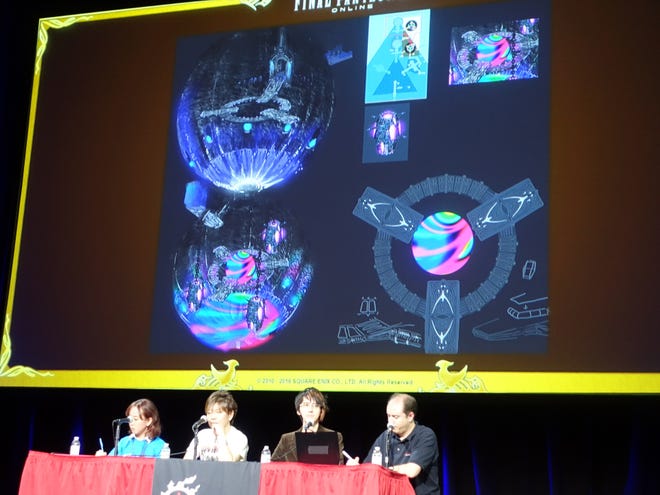

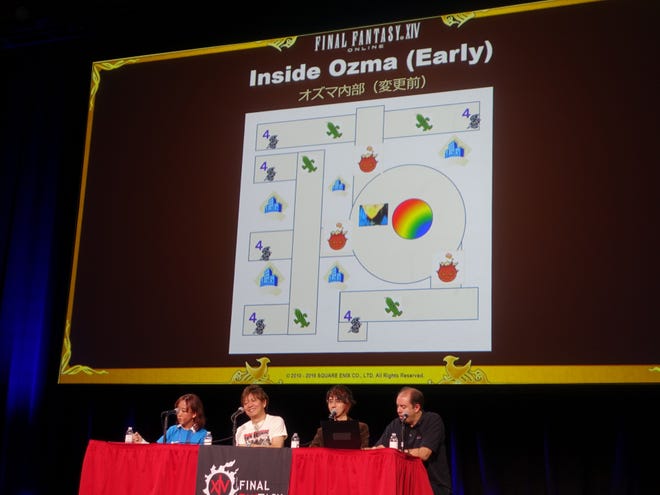
The original design for Ozma was a bit too close to the design of the earlier Void Ark fight. Yoshida felt that it didn't work to have such a "dark, claustrophobic pyramid". Instead, he told them to remove the sides of the pyramid and make the concept a bit lighter. Thus the skybound, airy feel of Ozma's final form.
The first outline for the fight within Ozma had six teams of four members, each with their own healer, but they found that it was a bit too difficult, because if a team's healer died during the black hole event, that team would likely fail. Nakagawa then asked attendees if they wanted a Savage version of the Ozma fight. With the resulting applause, he showed a video of a new Ozma shape-shift and party-killing attack.
"When I told the designers that I was going to show the Ozma fight at Fan Fest, they whipped up a new shape shift" said Nakagawa. "So if we're going to do a Savage version, that needs to go in."

Moving onto the implementation phase, programmers and planners work together in iterative development, making tweaks and changes as needed.
"With the FFXIV development team, sometimes we do our adjustments when directly connected to the server or there's a developer creating a server environment on their local PC. In this checking process, it's the latter," explained Yoshida.
"And it's through these countless in-game checks that we're able to see things we couldn't envision in the planning process," Nakagawa added.
Next, Nakagawa talked about the quality assurance process and some of the bugs they encountered. In one case, a bipedal golem would hunt players on the Ozma battlefield; that monster would end up floating by accident when it was trying to attack a player. The team was going to alter the monster's AI to prevent the floating issue, but instead, they just replaced the bipedal model with a floating monster. Problem solved.
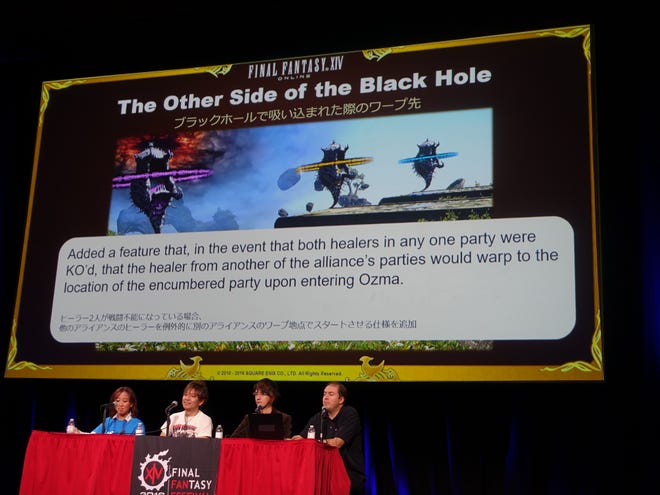
Another thing that changed was the warp destination mechanic after the black hole. For the internal Ozma, the healers are shifted around. If a healer in a group died, another healer is moved to make sure each of the three groups has a healer. Oddly enough, this caused more bug reports, because the QA team didn't realize the healer warping was an intended mechanic.
Then comes the internal 24-man raid test, with members from every team participating. This allows the FFXIV development team to offer up any further tweaks and ideas for the nearly-finished encounter. Yoshida talked about changing up who participates to ensure that a fight is doable even by casual players. He mentioned the extensive use of the chat function in-game to test out different abilities and players strategies.
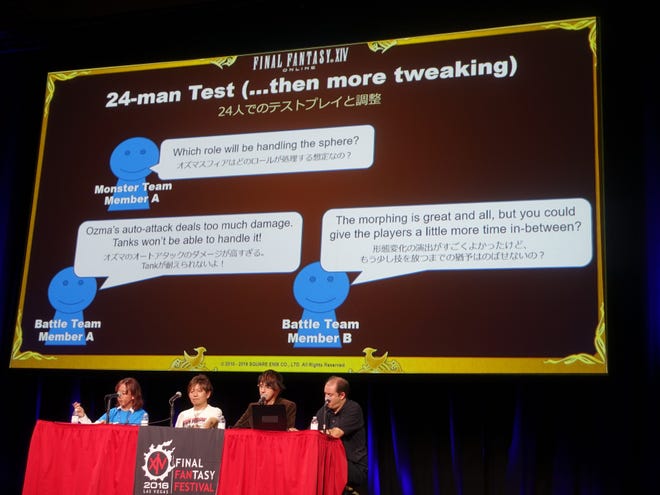
"We definitely want this to be content that beatable for casual players. For this test, we take people more on the causal side," said Yoshida. "Once the content is released, there's a lot of different types of players that get matched up through our raid function."
Nakagawa showed a list of tweaks that were actually made during this implementation phase. Originally, Ozma's Acceleration Bomb was an AOE attack that affected multiple players, but it ended up being too difficult and devastating for teams. Notably, players would fall off the level trying to avoid Bomb targets.
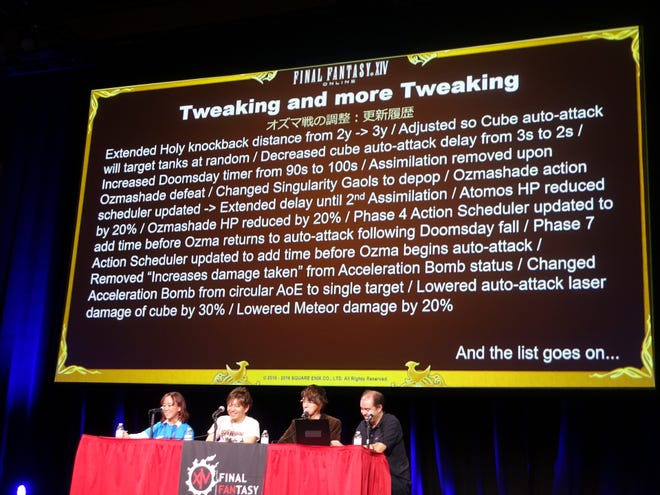
The cube-form laser attack originally attacked the player with the most threat, but that was changed to a simultaneous laser attack on all three party tanks. Testing also determined that key party members were dying to Acceleration Bomb too often. When asked why this was happening by the dev team, the testers noted that they couldn't even tell they had been targeted by the bomb, so a new visual effect was added.
With that, the panel came to a close, with Nakagawa echoing the original sentiment by Yoshida that saw him joining the Final Fantasy XIV development team.
"Today, using Ozma as an example, I showed you how battle content was put into the game. Because I only had an hour, there were things I wasn't able to cover, but I hope was able to show you some interesting things," Nakagawa said. "If today's presentation made you interested to work in the gaming industry, please send us your resume."


